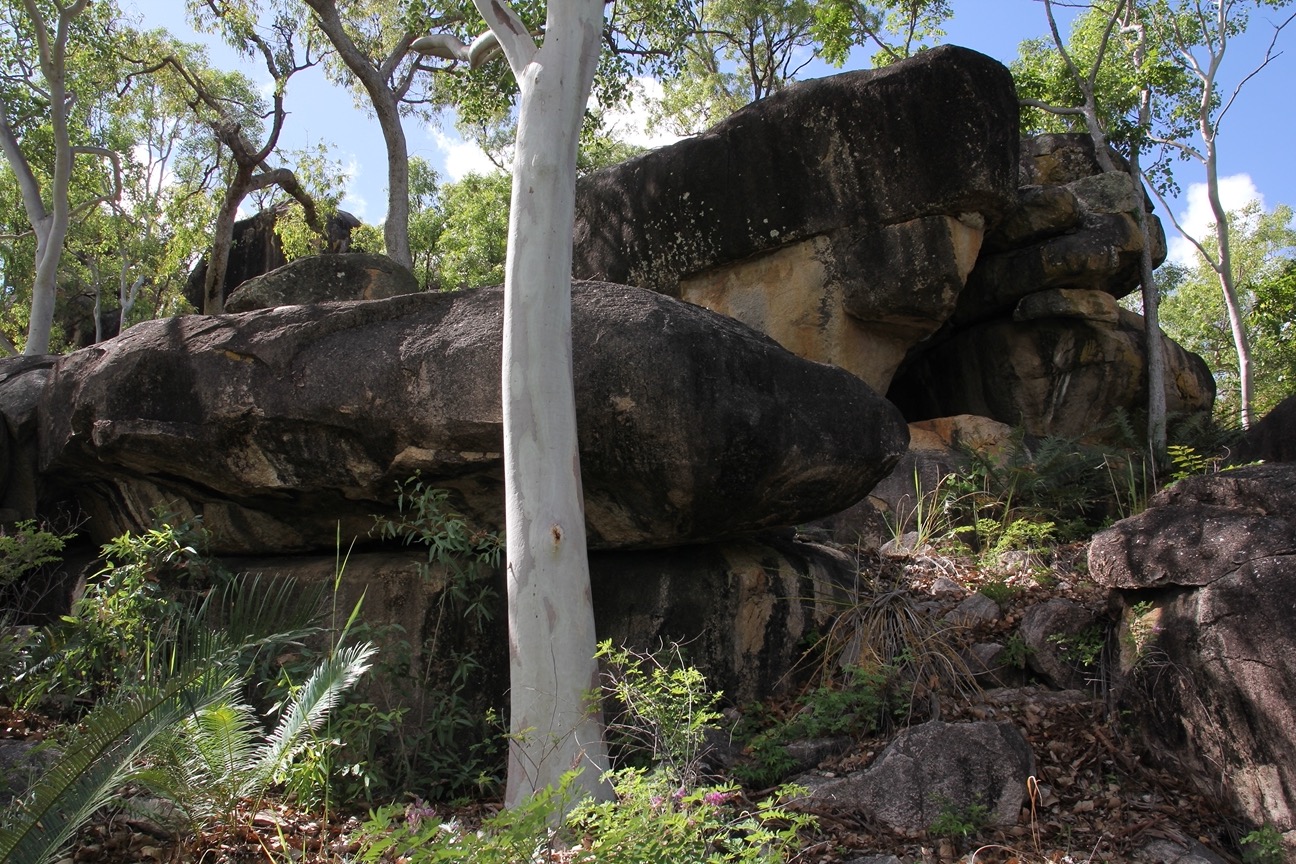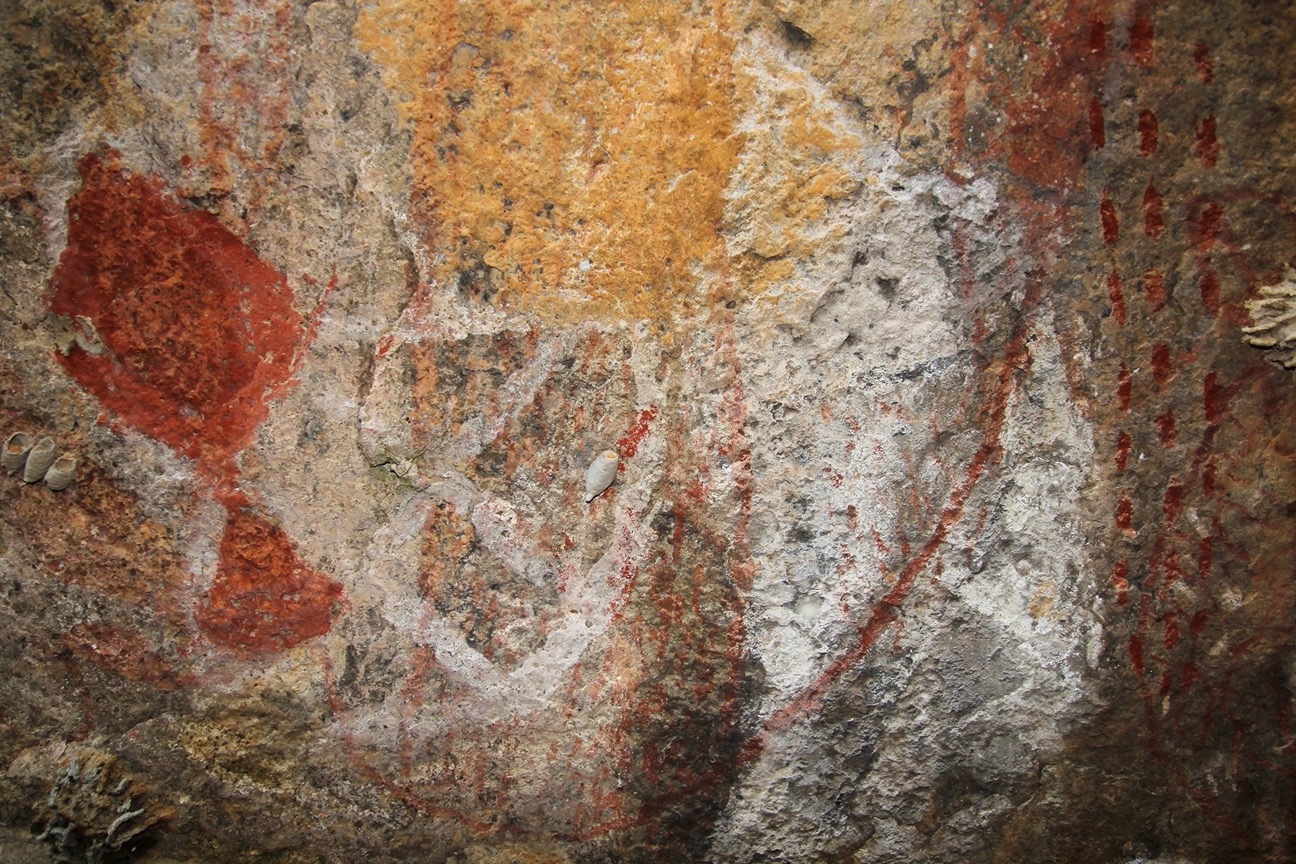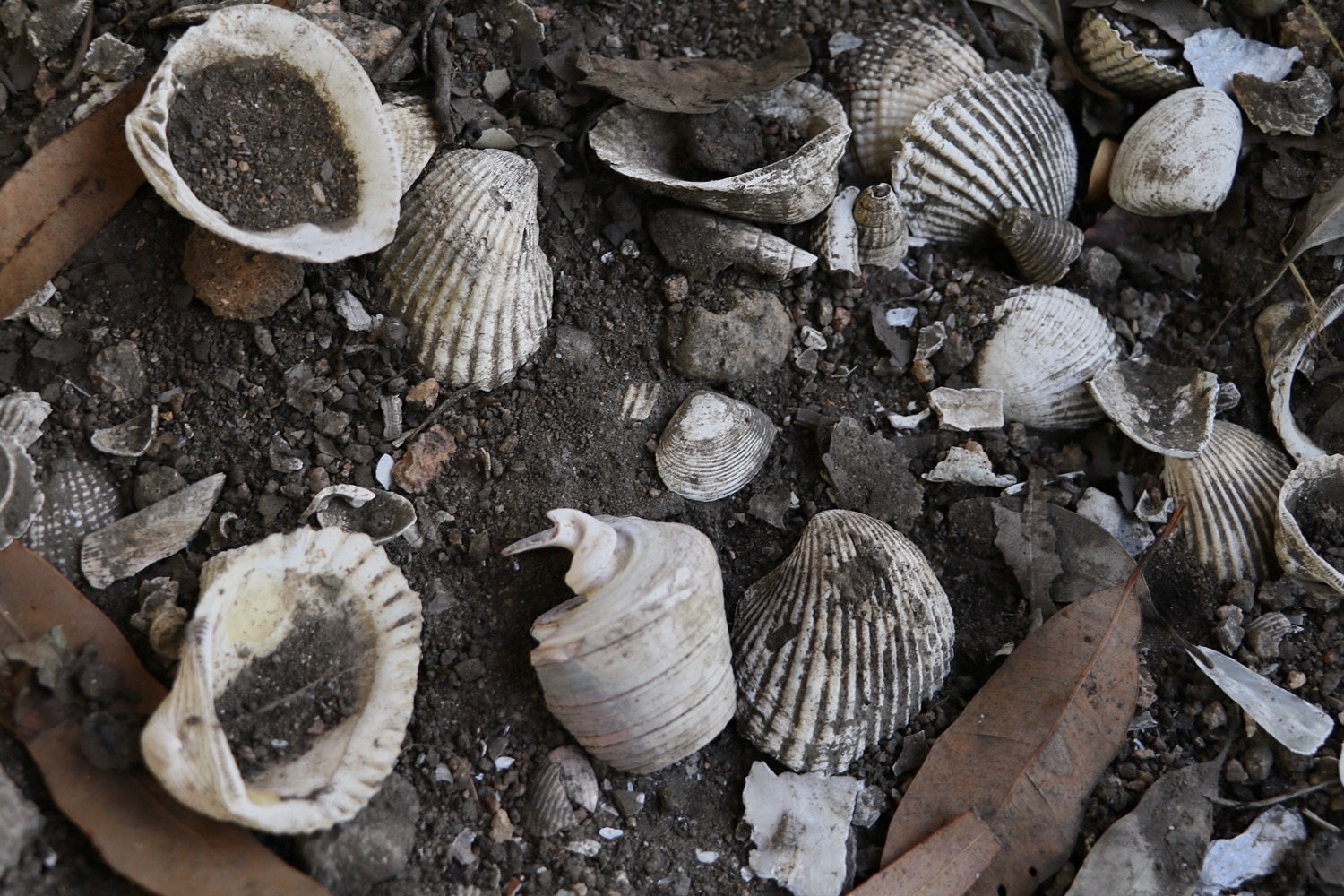Townsville Rock Art 1
In the hills to the south of Townsville, particularly at Cape Cleveland and around Mt Elliot, there is abundant evidence of Indigenous occupation. This is mostly in the form of rock art painted at numerous sites in the rugged landscape. It is so prevalent that it is surprising to find that virtually no research has been undertaken, and almost no publications or sources of information exist.
Visit the Queensland Tropical Museum, Townsville Historical Museum, or search the JCU or Townsville City Council website and you will find very little on Aboriginal habitation before 1864, other than the currently ubiquitous Acknowledgement to Country statements. Why is there this gap in our knowledge of the region? If the Romans had built a bathhouse in these hills, or the Vikings a roundhouse then UNESCO would have a mandate all over it, and universities would be dining out on their research grants.
But there is no such interest, and whilst the rock art sites are often small, faded, and sometimes illegible they do still exist and they represent the story of a group of people who lived in this landscape for thousands of years. People who are speaking to us from the past. Why are we not listening? This story deserves to be recorded, preserved, studied, shared and nurtured in the same way that we record other aspects of our past.
Part of the reason for our ignorance of this rock art, and the world it describes is because our recognition of it has been patchy and inconsistent, even though it exists in our immediate landscape. Mention of rock art just to the north at Halifax Bay was made as early as 1886 by Edward Curr in his compendium of ‘The Australian Race’ in which he states that the Aborigines, ‘paint representations of imaginary animals in caves and on rocks’.
But then there is a long gap before we find that a ‘bushy’ by the name of Ted Berry left us a record of the rock art that he found south of Townsville, in a sketchbook of 52 pages which he began in the 1930’s. Until recently this has remained unpublished and unexplored. More detail can be found here: https://coonambelah.com/ted-berry/
In 1951 a group of photographs of this rock art were published in the Australian Journal of Anthropology (4: 294-299) under the title of ‘Cave paintings in north-eastern Queensland’ and the author Frederick McCarthy was quick to identify images which he interpreted as ‘large fighting shields used by the natives of this area, made from the root flange of a giant fig tree. The shields bear totemic designs and illustrate well the manner in which local subjects are featured in Australian cave art’.
It was another 25 years before archaeologists and anthropologists from the newly established James Cook University began to collate details of the ‘material culture’ of the Aboriginal groups of the Burdekin and Herbert region. This was a wide-ranging and detailed undertaking which acknowledged that:
rock art is an important archaeological manifestation of the culture of the Herbert/Burdekin Aborigines, and although much of its spiritual significance has been lost, many examples of the art remain.
But this research took place in the pre-digital age, when rock art locations were recorded very inexactly, if at all, and photographs appear not to have survived. Very little interest has been shown since then with only an occasional paper or mention in the archaeological literature.
There has also been an academic reticence to engage with what are often described as ‘sacred sites’, but my experience has been entirely different. The Aboriginal custodians of this area, the Birri-Gubba Bindal, have been enthusiastic in recovering their history which was so swiftly taken from them beginning in the 1860s, and lost from their collective memories.
rock art sites can be full of shells – a sure sign of habitation


